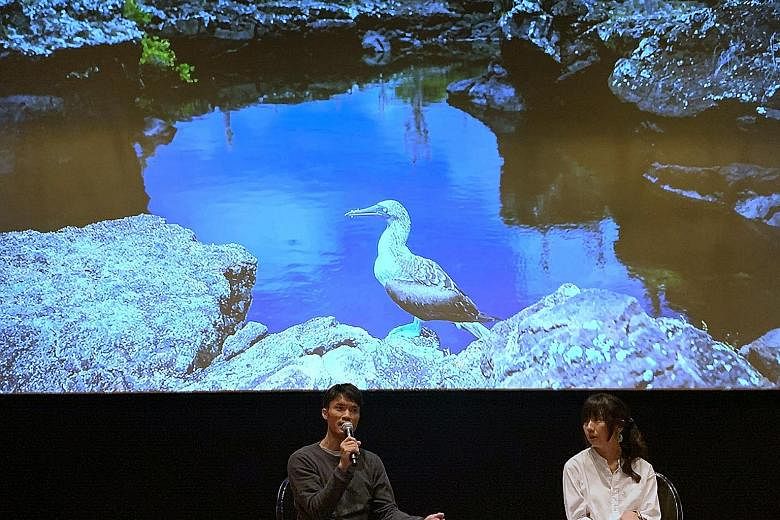When it comes to climate change, pictures can be more compelling than words. But gruesome photos may turn readers off, while photos of beautiful animals or places may distract some from the far-reaching impact of the problem.
So how should a balance be struck? Context is key, said The Straits Times environment correspondent Audrey Tan and executive photojournalist Mark Cheong.
They were responding to an ST reader after giving a talk yesterday on a climate change special published on June 9. It was based on their visits to various places in Indonesia and the Galapagos Islands in South America.
They showed the audience a picture of a blue-footed booby bird with cacti in the background to illustrate a desert-like climate, and contrasted it with that of a giant tortoise in the rain. Both were taken on the Galapagos Islands.
"El Nino affects different parts of the world differently," said Ms Tan, 29, referring to a natural climate cycle that can cause changes in rainfall patterns. "The two pictures, while beautiful, illustrate how rain can affect the Galapagos Islands, which is usually dry and desert-like."
For example, the deluge of rainfall could wash away the giant tortoise or inundate its eggs, she said.
The talk, attended by 80 people, took place at the National Museum of Singapore, as part of a photo exhibition organised by ST called Through The Lens.
Another issue raised during the session was the role of businesses or large corporations in fighting climate change.
-
THROUGH THE LENS
-
The showcase of over 250 images by Singapore and international photojournalists celebrates the best in news photography and comprises The Straits Times and World Press Photo exhibitions. It ends on Oct 27. Admission is free.
Schools may request guided tours (subject to availability) by e-mailing stprojects@sph.com.sg
While Ms Tan noted it was important for journalists not to step into the shoes of activists, she said stories on climate change "contribute to a growing environmental awareness that has potential to push corporations to take action", such as doing away with plastic bags or straws.
Mr Cheong, 31, said seeing the "bleakness and scorched earth" in haze-ridden Indonesia has had a personal impact on him. "While I was on the trip, I became consciously more environmentally friendly."
Ms Elaine Lew, 43, who attended the talk with her eight-year-old daughter Emily, said it is important for children to learn about climate change. "It is a big issue that may seem far-fetched, but every little effort counts, including teaching our kids to be responsible for their actions," she added.


